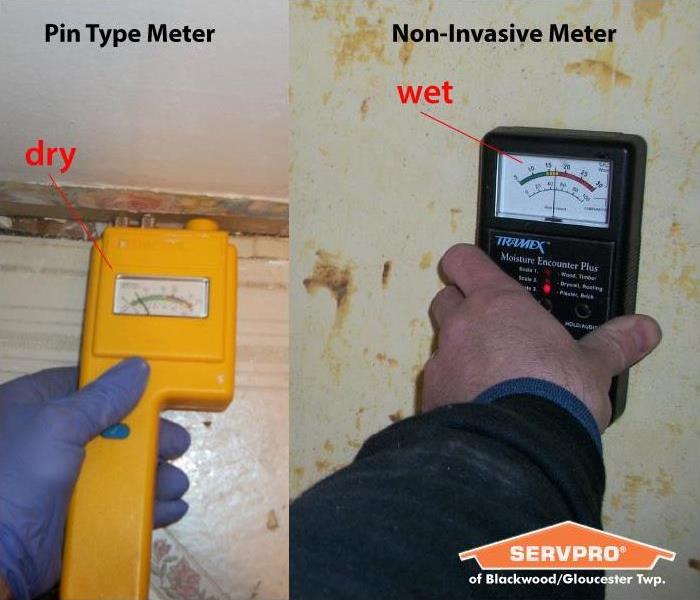Meter Use in Water Mitigation
5/13/2019 (Permalink)
Mold presents a serious health hazard. Mold can destroy building materials by extracting carbon-containing substances and using them as food. All organic matter can serve as a food source for mold: wood, wood-based products, plastics made from petroleum products, and building materials such as concrete and drywall. Mold grows on wet surfaces, in high relative humidity at moderate temperatures and gets its nourishment from the material on which it grows. To avoid mold, we can only control the wetness of the materials and the high humidity in the air. The only variables in the mold equation we can control are moisture and humidity. We usually do that by keeping buildings dry.
Disasters happen: a pipe breaks, a roof leaks, or floods occur, we need to act swiftly and remove the excess water before mold builds up. SERVPRO uses moisture meters and thermo-hygrometers to determine the extent of water damage, and later to check the drying progress, then last to confirm all excess water has been removed.
What is a meter?
Meters are defined as devices that provide a quantified representation of the amount of moisture present in material, either as moisture content or a moisture level. There are two primary types of moisture measurement used in the restoration industry: pin and non-invasive.
Non-invasive moisture measurement.
This method is good for completing a rapid initial investigation of the affected area and quickly allows the ability to map out excessive moisture in the property. This is a good search for moisture measurement that may not be available to measure with a pin type meter. This type has drawbacks and is generally not as accurate as a pin type meter.
Pin type meters.
Pin type resistance measurement is generally a more reliable method of moisture measurement in a wide range of building materials. It allows operators to add accessories such as deep wall probes and hammer electrodes, allowing diagnosis of moisture at different levels. Their built-in pins measure electrical resistance between the pins, which is affected by the moisture content in the material. The readings from this meter is used throughout the drying process.
Thermo-Hygrometers.
Thermo-Hygrometers measure the output of the dehumidifiers. Measuring the humidity in the air both on the input and output of the dehumidifier in grains per pound allows us to calculate the drying rate as well as adjust the number of dehumidifiers on the job.
Moisture meters and thermo-hygrometers are necessary for water damaged surfaces. Knowing when the property is ready to be worked or finished often determines a project’s success or failure. You can trust SERVPRO of Blackwood/Gloucester Township to professionally assess and dry your water damaged property.





 24/7 Emergency Service
24/7 Emergency Service
